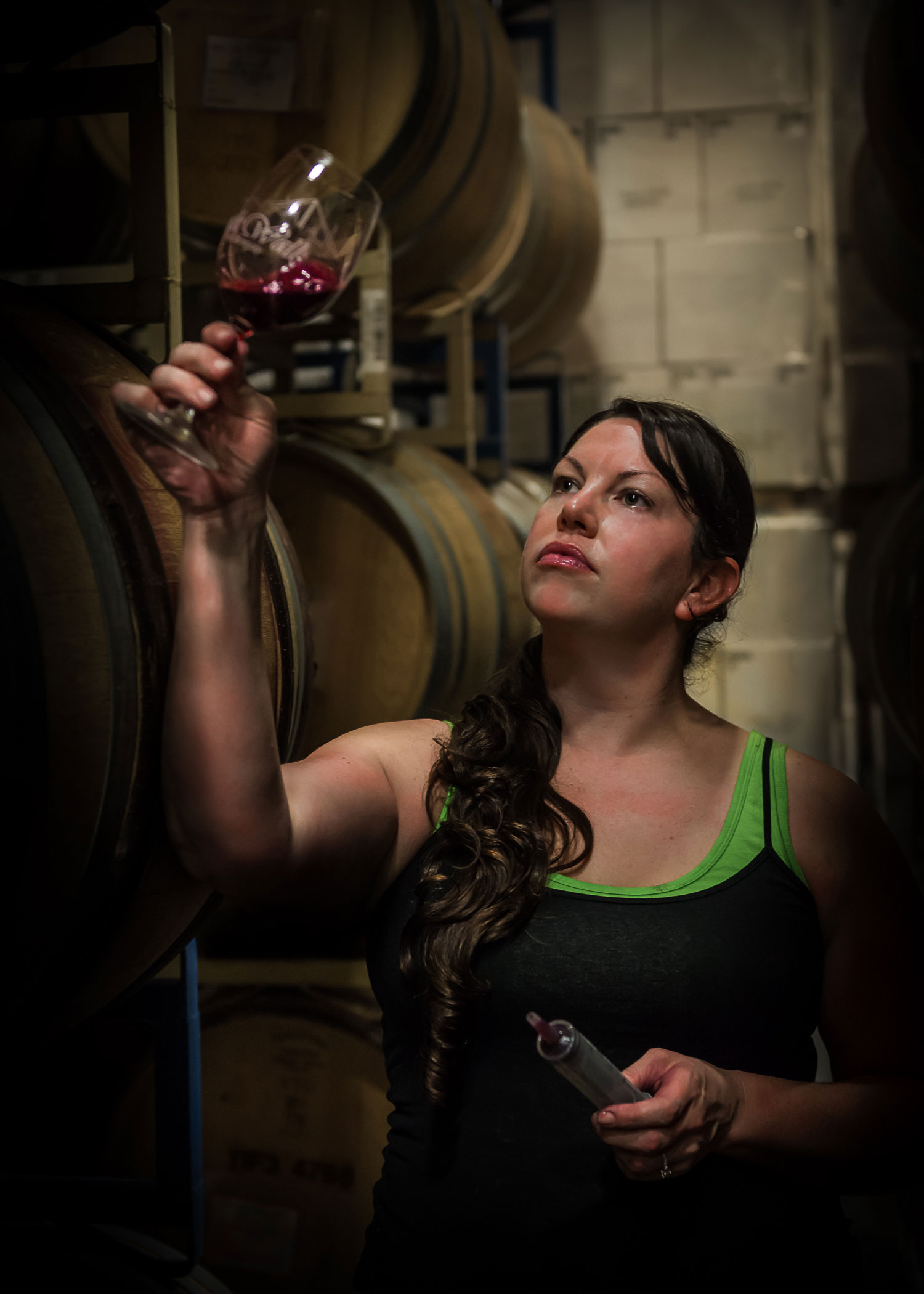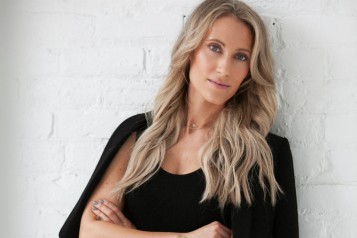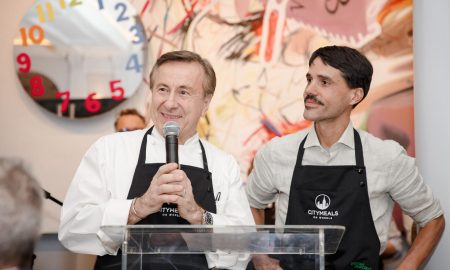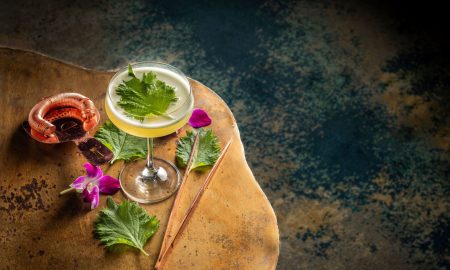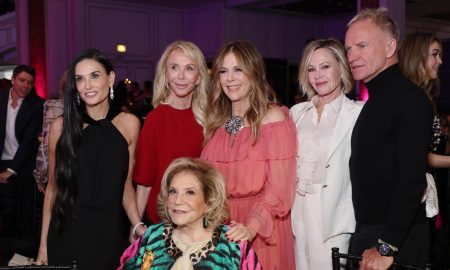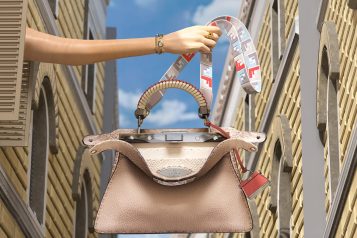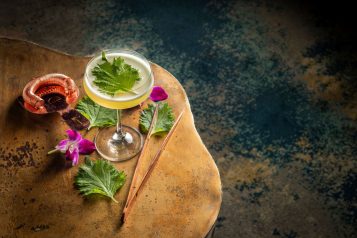In 1886, Josephine Tychson became the first woman to own and operate a winery in Napa Valley. The sudden death of her husband forced Tychson to take up the farming and winemaking herself. For eight years she ran Tychson Cellars producing 30,000 gallons of Zinfandel, Riesling, and Burgundy. Today she is recognized by Freemark Abbey, the winery that currently sits in the spot where Tychson Cellars once was, as a female pioneer. It is her can-do spirit that can be seen in the ten female winemakers listed, in alphabetical order, here. Like Tychson, these ladies are paving the way for new generations while making names for themselves in what is predominantly a male-driven industry. We raise a glass to these women, and if you come across a bottle of their wines, we advise you to do the same.
Anne Moller-Racke, Donum Estate
 Photo Credit: The Donum Estate
Photo Credit: The Donum Estate
“I love the story of the vintage, the weather. Having farmed these vineyards for over 30 years gives me a wonderful perspective. I remember each year clearly and what made that year unique.”
Known to some as the ‘Princess of Pinot’ Anne Moller-Racke’s title at Donum Estate is president and winegrower. The German native believes that farming the grapes is the most important aspect of winemaking—think of her more as a plant whisper than traditional winemaker. “Wine growing is a slow process that requires patience, forcing people to commit to a place,” she says. “There is no fast forward, we harvest only once a year.” Moller-Racke has been in the Sonoma wine industry for 36 years and she founded Donum in 2001. The beautiful ranch-style estate sits on 187 acres of rolling Carneros hillside and is home to an incredible sculpture garden. Book a tasting with Donum and you’ll not only learn about how the Pinot Noir grapes are grown, but about the sculptures that dot the property, from Carl Fredrik Reuterwärd’s Non-Violence to Ai WeiWei’s Circle of Animals / Zodiac Heads. Plus, you’ll be blown away by Moller-Racke’s infectious natural happiness and pure positivity. “I do see the glass half full. It is rewarding to add to quality of life. Winemaking makes you slow down, start a conversation, share a meal and smell the Pinot.”
Cathy Corison, Corison Winery
 Photo Credit: A Woman’s Palate
Photo Credit: A Woman’s Palate
“Wine is alive! It is the happy result of a series of living systems conspiring to create the magical alchemy in our glass. Winegrowing keeps me plugged into the earth.”
Cathy Corison has never been afraid of standing up for herself in a male-driven environment. During college in the early 70s, Corison was on the men’s diving team because the school, Pomona College, didn’t have a women’s team. When she was getting her Master’s degree in enology at UC Davis, Corison’s professor told her she’d never get a job in Napa because she was a woman. However, she persevered and headed to wine country where she worked her way up the ranks at Freemark Abbey. In 1987, she founded her namesake winery in a barn, built by her husband, in St. Helena. She makes only Cabernet Sauvignon and Gewürztraminer and today she is known for being one of the best Cab producers in the Valley. Her motto is “integrity is the only thing any of us have to sell” and the achievement she’s most proud of? “The 30 vintages of Corison Napa Valley Cabernet that are in the barn!”
Eileen Crane, Domaine Carneros
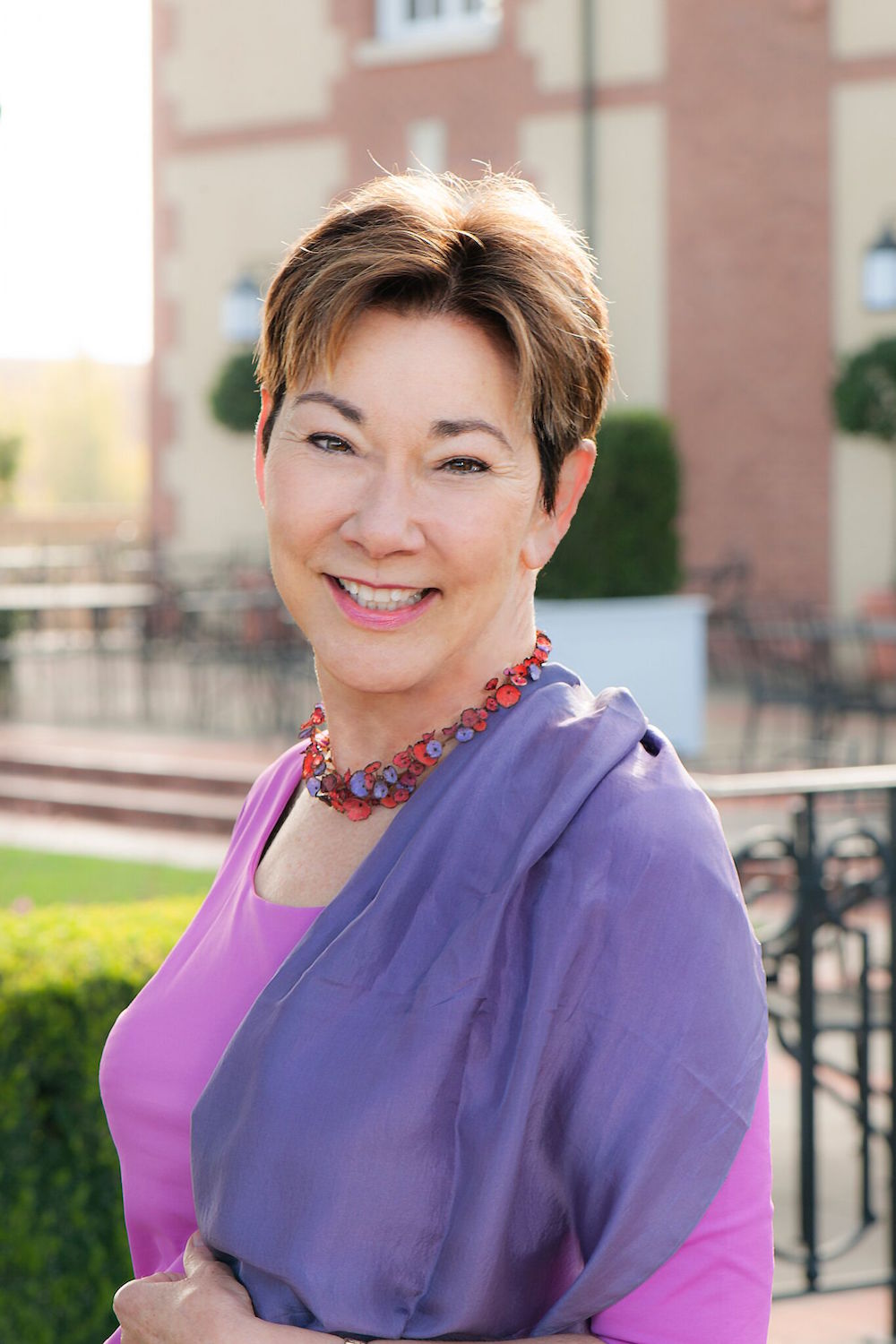 Photo Credit: Domaine Carneros
Photo Credit: Domaine Carneros
“I’ve been fortunate to work for families concerned with quality. This has allowed me to produce the highest quality estate grown grapes and the ability to develop a style all our own.”
In 1987, a little Champagne house named Tattinger tapped Eileen Crane to build Domaine Carneros from the ground up. Having helped establish nearby Gloria Ferrer Caves and Vineyards in 1984, Crane was up to the task and then some. Fast forward 30 years and Crane is the most experienced and respected sparkling winemaker in the United States. Her Blanc de Blancs cuvée, Le Rêve, is often recognized worldwide as America’s finest sparkler—and this is the achievement Crane is most proud of. “Years ago, when Champagne Taittinger asked me to create a Blanc de Blancs, I was petrified. I had very little experience with this style of all Chardonnay sparkling,” she says. “Our first was released in 1998 and it immediately ascended to the top of the charts. I hoped for this, but could not really imagine it happening.” Her favorite time to drink Le Rêve? Around the holidays. The rest of the year dictates her drinking choices. “Brut Vintage becomes my favorite about October. In January and February our Pinot Noirs taste especially good. And April 1 inspires me to re-up with our luscious Rosé Sparkling. I drink the Rosé all summer long unless I have oysters, in which case I always have the Ultra Brut.”
Geneviève Janssens, Robert Mondavi Winery
 Photo Credit: Robert Mondavi Winery
Photo Credit: Robert Mondavi Winery
“Walking in the To Kalon Vineyard, watching the grapes develop and tasting them along the way until they reach optimum maturity and ripeness—that’s what I love most about winemaking. I also enjoy creating and crafting wines with a great team.”
Geneviève Janssens was practically destined to become a winemaker. She grew up in France among her father’s vineyards and studied enology at the University of Bordeaux under some of France’s most legendary viticulturists. It’s no surprise then, that when she came to Napa in 1978, she went to work with the region’s top producer at the time, Robert Mondavi, whose winemaking style was reminiscent of her father’s. She carries on both of their legacies by “mentoring the next generation of winemakers and creating food-worthy wines that authentically reflect grape and place.” What does she love most about the winemaking community in the Valley? That it’s rich in innovation and creativity: “There is great diversity in winemaking and a spirit of collaboration and sharing between wineries that is very refreshing. With over 400 wineries, there are many ideas and viewpoints, which makes this a fertile place for winemakers. We also have wonderful diversity of terroir and grape varieties. The soil and climate means we’re always in a state of discovery – there are over 300 soil variations alone.”
Kathryn Hall, Hall Wines and Walt Wines
“There is so much I love about the world of wine—the interplay between nature and human creativity, the idea of being able to add joy to people’s lives, the happy people who attend our wineries or wine dinners.”
Kathryn Hall has been in the wine business since the 1970s. She first started producing Sauvignon Blanc and Cabernet Sauvignon at Walt (which is her maiden name) Wines in the early 80s. Having assisted the city attorney in Berkeley, California, presided over an inner city development company in Dallas, and served as the United States Ambassador to Austria, she’s lived an incredibly colorful life. However, Hall has always felt most at home in the vineyard and in 2003, along with her husband, Craig, she opened Hall Wines. One of the things Hall is most proud of is “being able, over the past 17 years, to grow both the number of wines we make and the quality of our wines. So often larger total production is associated with lower quality. I am proud we have been able to grow both,” she says acknowledging that “makers of great wine need to guard against cutting corners—increasing production in the vineyard or using stabilizing processes in winemaking that increase predictability but diminish subtleties and layering of flavors.” Luckily, through Hall’s guidance, neither of her brands have faced this disappointing predicament.
Katie Carter, Wattle Creek and Lyeth
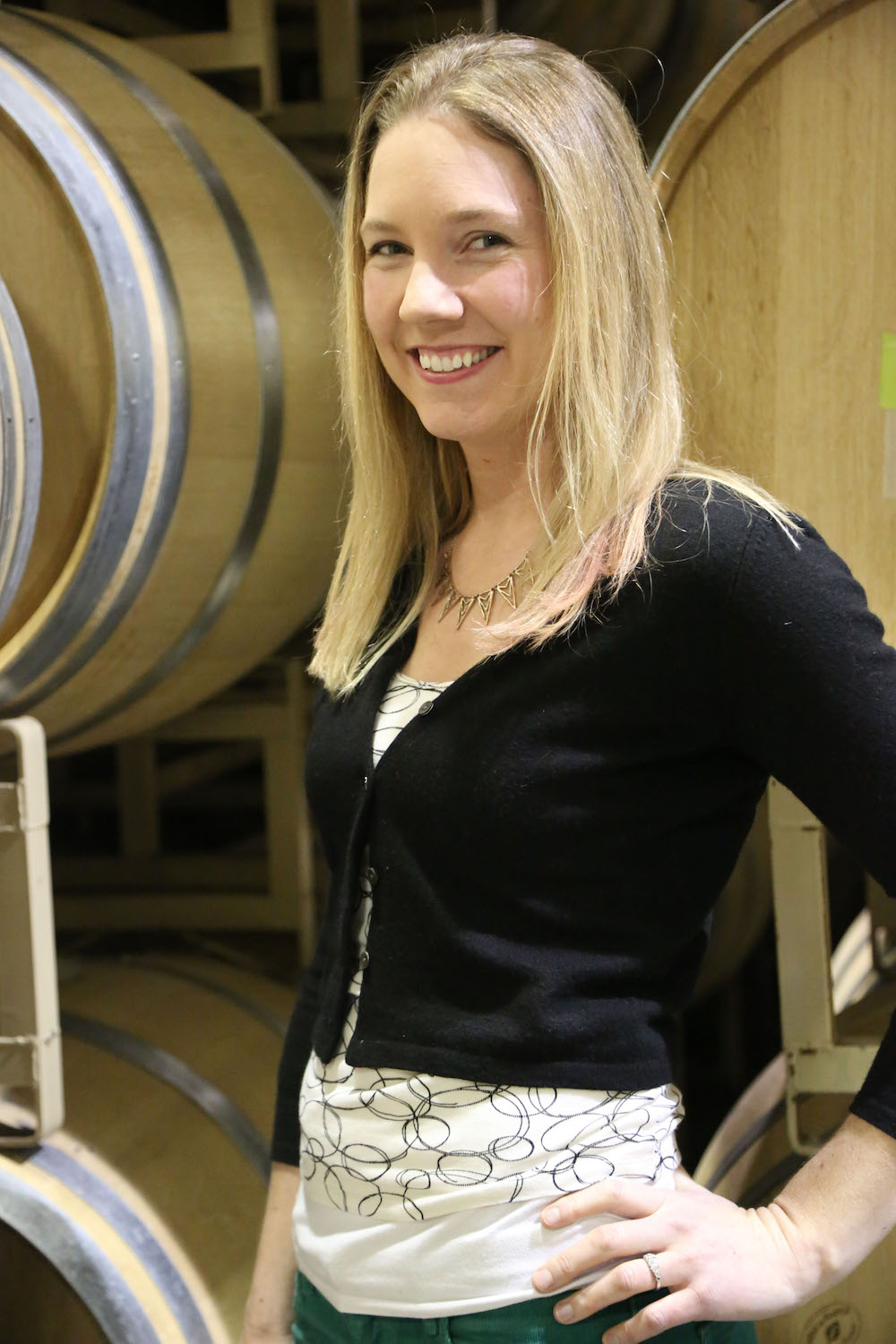 Photo Credit: Boisset Collections
Photo Credit: Boisset Collections
“There is a dynamic balance of considerations from vine to bottle, which I love coordinating. The microbiological community actually doing the work (fermentation!) is fascinating to me, and is never the same.”
Katie Carter is one of the wine industry’s most up-and-coming young winemakers. Spend just two seconds with the bubbly blonde and you can’t help but feel her enthusiasm for her profession, in particular the science behind winemaking. Eleven years after graduating from college—she studied integrative biology at UC Berkeley—Carter was named winemaker at two of the Boisset Collection’s Sonoma-based wineries, Wattle Creek and Lyeth. Although she didn’t study enology, she was easily capable of translating her biology background to winemaking. When asked what she loves most about winemaking, her answer is long-winded, but passionate. “We are but stewards of the microbiological environment, ensuring the most optimal conditions for activity. The blend of science, hard labor, and ultimately sensory judgment is captivating and always a unique challenge. Plus, crafting a tangible product for enhancing one’s pleasure of living is awesome!”
Margo Van Staaveren, Chateau St. Jean
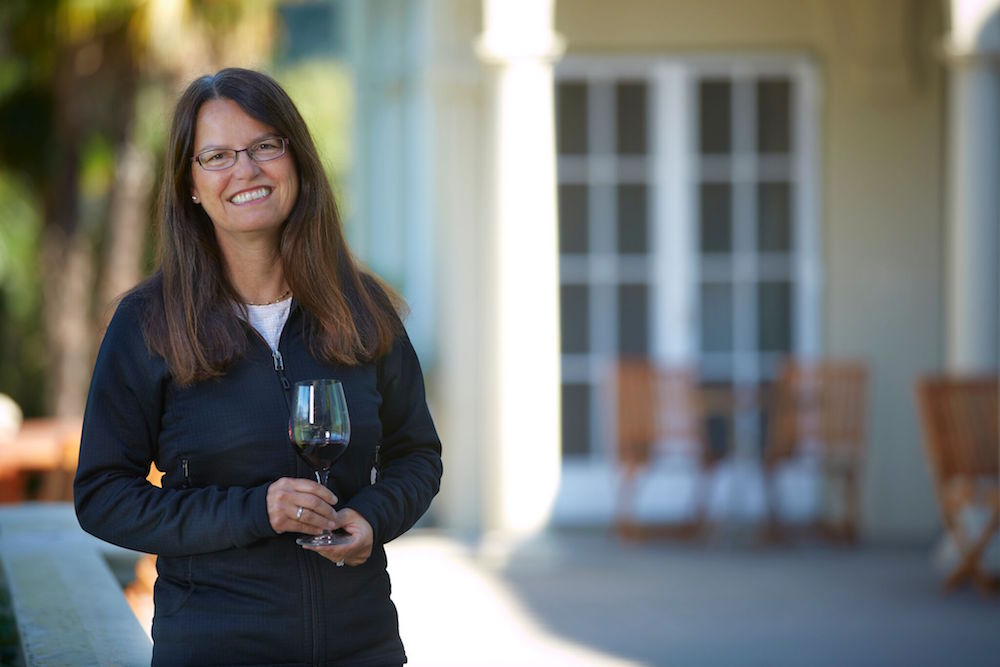 Photo Credit: Chateau St. Jean
Photo Credit: Chateau St. Jean
“I thoroughly enjoy what I do and I want that energy to be infectious to those who make wine with me!”
Margo Van Staaveren has been working the same vines at Chateau St. Jean for the past 37 years; along the way she has played a pivotal role in every aspect of the winemaking process. Van Staaveren is known for being a master blender. She creates signature blends that remain similar from vintage to vintage, but at the same time capture the uniqueness of that particular growing year. Her favorite aspect of being a winemaker is the ritual of it all. “I love the cycle of winemaking. One cycle is the planning of a vineyard through to planting it, watching it develop and finally, making the wine from the vineyard,” she explains. “The other cycle is annual. From bud break all the way through to harvest, we watch the evolution of the season. Tasting the grapes, making the pick decision and making the wine never ceases to amaze me. Finally, getting to open a bottle for friends and family that I’ve had a part in making is thoroughly enjoyable!” Another of Van Staaveren’s talents? The ability to make a wide variety of wines, from everyday to special occasion bottles to cellar varietals.
Pauline Lhote, Chandon
“The wine industry is a very small world, where everyone knows each other, but the sense of community here in Napa is so great. We are not making wine to compete with each other, but to share with one another.”
How many California-based sparkling wine makers can say that they grew up in Champagne, France? We’re guessing just one and that is Chandon’s Pauline Lhote. She always knew she wanted to make bubbles and she worked at Moët & Chandon and Nicolas Feuillatte before setting her sights on Chandon. In 2006, she signed up for a three-month contract to work at the Yountville sparkling wine house. However she never left, and today she oversees the production of the brand’s bubbly. “It is a job that never gets old as it is never the same, there is no routine,” she says. “The process is so diverse—from walking the vineyard, to harvest, to tasting the wine throughout the entire winemaking process as it evolves, to bottling and finally being able to talk about it! Obviously, what I love most about it is the finished product itself and being able to share it with friends and family.”
Shauna Rosenblum, Rock Wall Wine Company
“Wine is a pleasure that we think everyone should have access to. Our Wine Club has over 4000 members, and I will continue to make the best wine possible, to make these fabulous people happy.”
What we love most about Shauna Rosenblum is her remarkable ability to do things her own way. Her winemaking style is all-inclusive, her tasting room is housed in an old military base in Alameda, and her motto is “never underestimate the value of a little fun.” This she learned from her father, Kent Rosenblum, a wildly successful winemaker in his own right. Rosenblum purposely didn’t use the family name for her winemaking endeavor and set out to do everything on her own. During her first harvest, she crushed 60 tons of grapes all by herself. In the 2016 harvest, the team crushed 627 tons, illustrating just how popular her wine brand has become. “Our goal is premium wine without the pretense,” she says. “When we started making wine at Rock Wall 10 years ago, we would go to these wine events in San Francisco and think, ‘How can a room full of alcohol be so boring??’ We wanted to fun things up, while making the most ultra-premium wine from the best grapes around Northern California. We believe in inclusivity, and the East Bay is the proper melting pot for who we want our audience to be.”
Stacy Clark, Charles Krug Winery
“Winemaking is an old science, but the vineyards, marketplace, and the growing and harvest conditions are constantly changing, so there is always a vibrancy and a tension. You’re always learning something.”
Stacy Clark has some big shoes to fill. As the winemaker for Charles Krug Winery she oversees the production of the brand’s rich red varietals and lush lovely whites. She’s also in charge of tasting the library of vintages that date back to 1966 to determine which bottles are ready to be shipped to special club members. On top of this, she’s working under one of Napa’s most illustrious wine dynasties: the Mondavis—but she loves it all. “I am proud to participate in the Charles Krug/Peter Mondavi Family winemaking legacy—it’s a great team here, there’s tremendous potential, and I look forward to coming to work every day. One of the things that I love about making wine for Charles Krug is the opportunity to experiment while creating our reserve wines. Each of these small-lot wines represents a recognition of something unique or maybe special from our vineyards.” She sees her biggest challenge as optimizing the growing season and harvest—but as she proved in the difficult 2011 vintage, Clark is capable of handling the weather, and in that year made some very interesting wines with weight and palate structure that are worth checking out.









